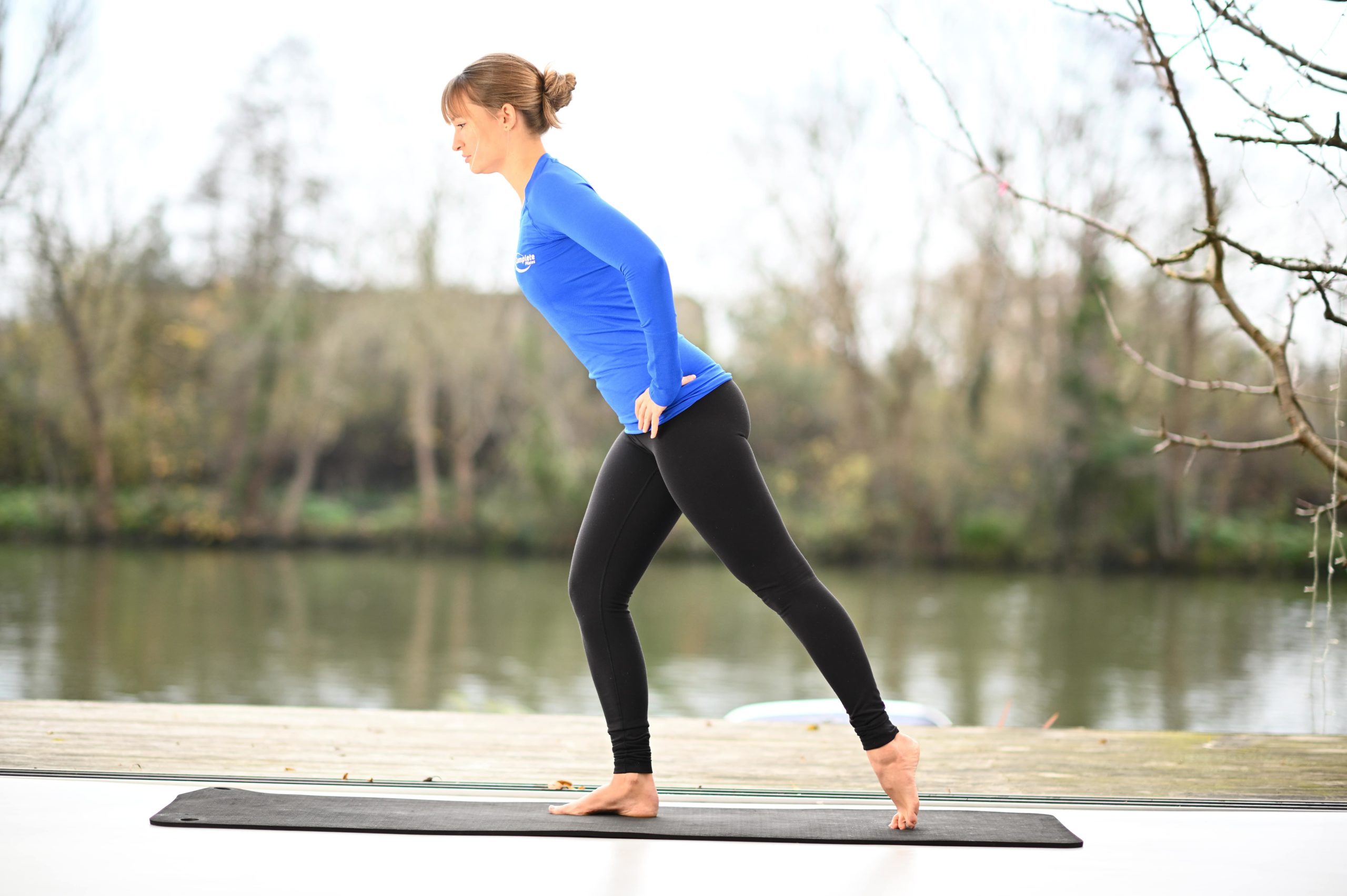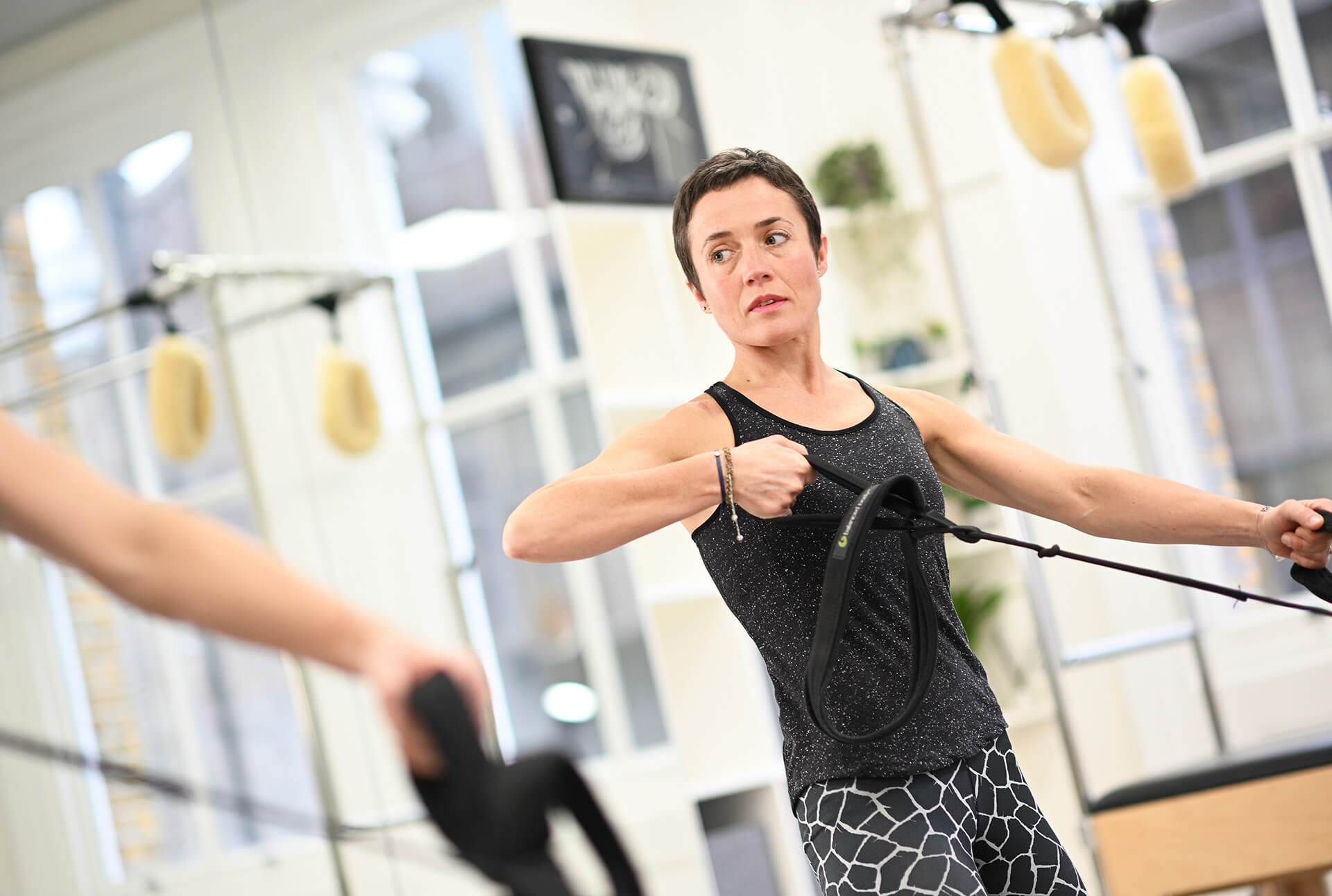Have you found that since working from home you are not moving around as much?
Maybe you are too busy running after the kids or simply forget?
Or are you already starting to get backache simply because of your new office set up?
The COVID-19 pandemic has us all at home and naturally moving less than ever. By simply not doing your normal commute to work, drop off to school or even walking out to get lunch, all our step counts are down.
A lot of us are now working from home and spending more time than ever on the computer, your phone, or sat in front of the television. A lot of our clients are also telling us that they have far from the ideal setup for home working as well.
So, to give you a few ideas on how to maintain your physical and mental health we have put together a few simple exercises which everyone can do and all you need is a little bit of space!
Foot elevated bridge
Benefits: spinal mobility, glute and hamstring strength and hip flexor length.
Position: Lie down on the floor with your feet up on the sofa hip-distance apart. Press your feet down into the sofa and allow your pelvis and spine to rise up off the floor until ideally, your hips are in line with your shoulders and knees. Pause at the top and see if your head, neck and shoulders are relaxed, before rolling your spine and pelvis back down to rest on the floor. Repeat 8-10 times.
Tips: pull your heels towards your glutes and try tucking your tail under if you feel it in your lower back. This should be about your legs!
Cat cow
Benefits: spinal mobility into flexion and extension and weight-bearing particularly into your arms.
Position: go on all fours, with your hands directly under your shoulders, knees under your hips and top of feet flat to the floor. The movement should be initiated from the pelvis. As you exhale, start to tuck your tailbone down between your legs allowing your spine to arch. Inhale, lift the tail bone towards the sky, feeling the sit bones opening and your spine moving into extension. Let your head follow the flow of your spine.
Tips: keep pressing into your hands so your spine doesn’t just sag between your shoulder blades. You should feel a stretch in your spine but no pinching
Thread the needle
Benefits: spinal mobility into rotation and weight-bearing particularly in your arms.
Position: on all fours find your neutral spine. Take the weight off one hand and place it palm up underneath your chest. Keeping your hips from moving side to side, slide the arm across the body under the opposite arm, bringing your spine into rotation. Bend the other arm to allow more rotation and allow your head to follow the movement. Press through the grounded arm to turn the spine back to neutral and bring the hand back to all fours position.
Tips: You can do this sideways onto a wall to see if you are swaying side to side. Make sure you are rotating away from the wall!
Related reading: Thread the needle exercise
Knee hovers
Benefits: abdominal activation, stabilisation of your spine and weight-bearing in your upper limb.
Position: on all fours with your hands under your shoulders and knees under your hips. Tuck your toes under so you can push into them. Keeping your spine in its neutral position with the 3 natural curves, press down into your hands and stand into your feet to float your knees approximately 5cm off the floor. Hold for 10 seconds and return your knees to the floor.
Tips: keep breathing to ensure you are not bracing
Scooter
Benefits: glute and hip strength in standing, balance and weight-bearing of the lower limb.
Position: Start in standing with your feet hip-width apart. Sit your hips back and lean your torso slightly forward. Your knees will bend but keep your knees over your ankles rather than your toes. Stand your weight into one leg without rotating at your hips. Slide the opposite leg backwards until it comes into a straight line with the angle of your torso. Slide the leg back and forth 12-15 times. You will start to feel a burn as your muscles work in your stabilising hip. Repeat on the other side.
Tips: If you struggle to balance, use the back of a chair or wall to have a very light fingertip touch. Push into your static heel to get more glute activation.
Education is key:
These blogs are designed to give information to everyone, however, it is important to remember that everyone is different! If you have not seen one of our therapists and have any questions about injuries, what you have read or whether this may be useful to you, please just ask. We are more than happy to help anyone and point you in the right direction. Our biggest belief is that education is key. The more you understand about your injury, illness and movement, the more you are likely to improve.




